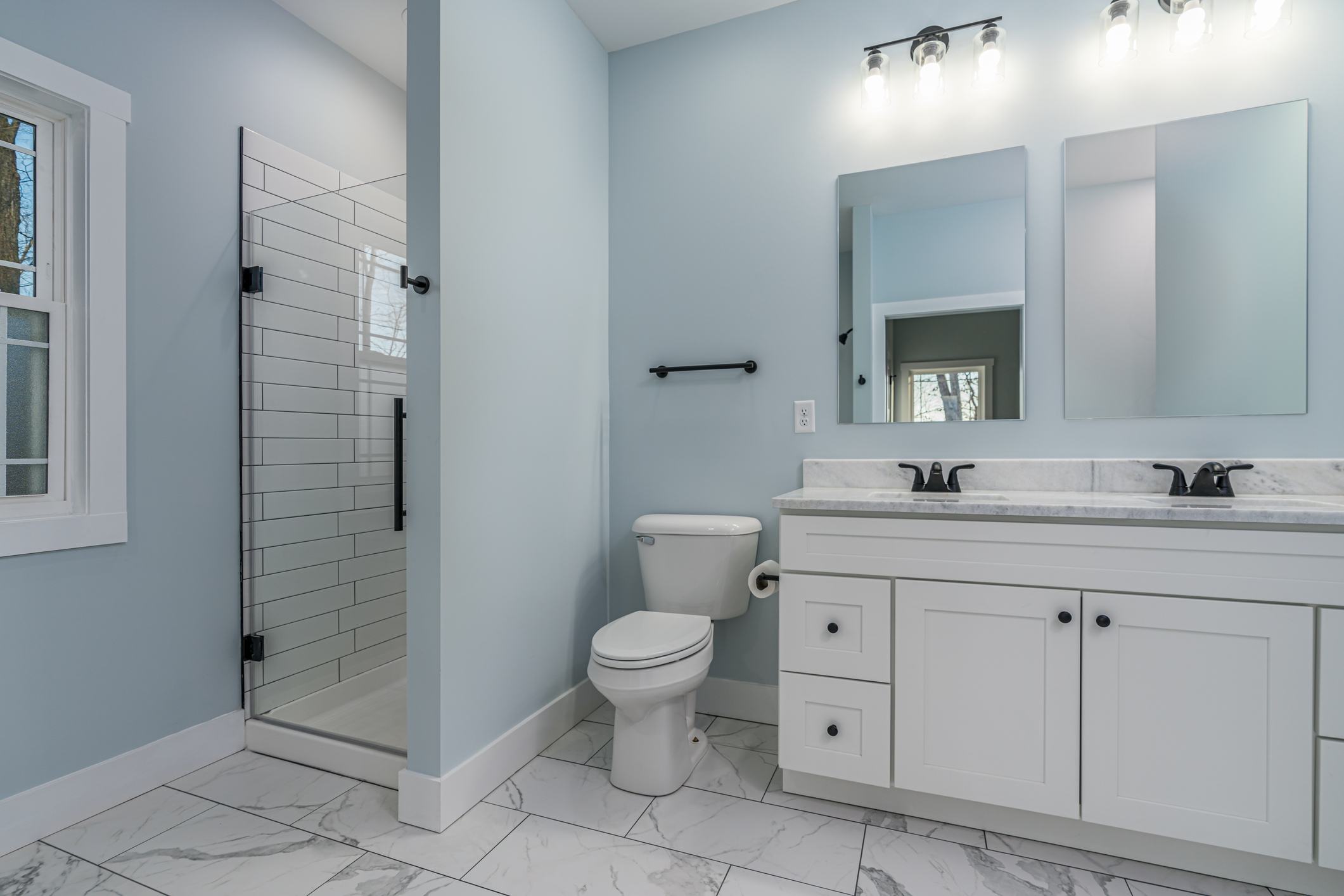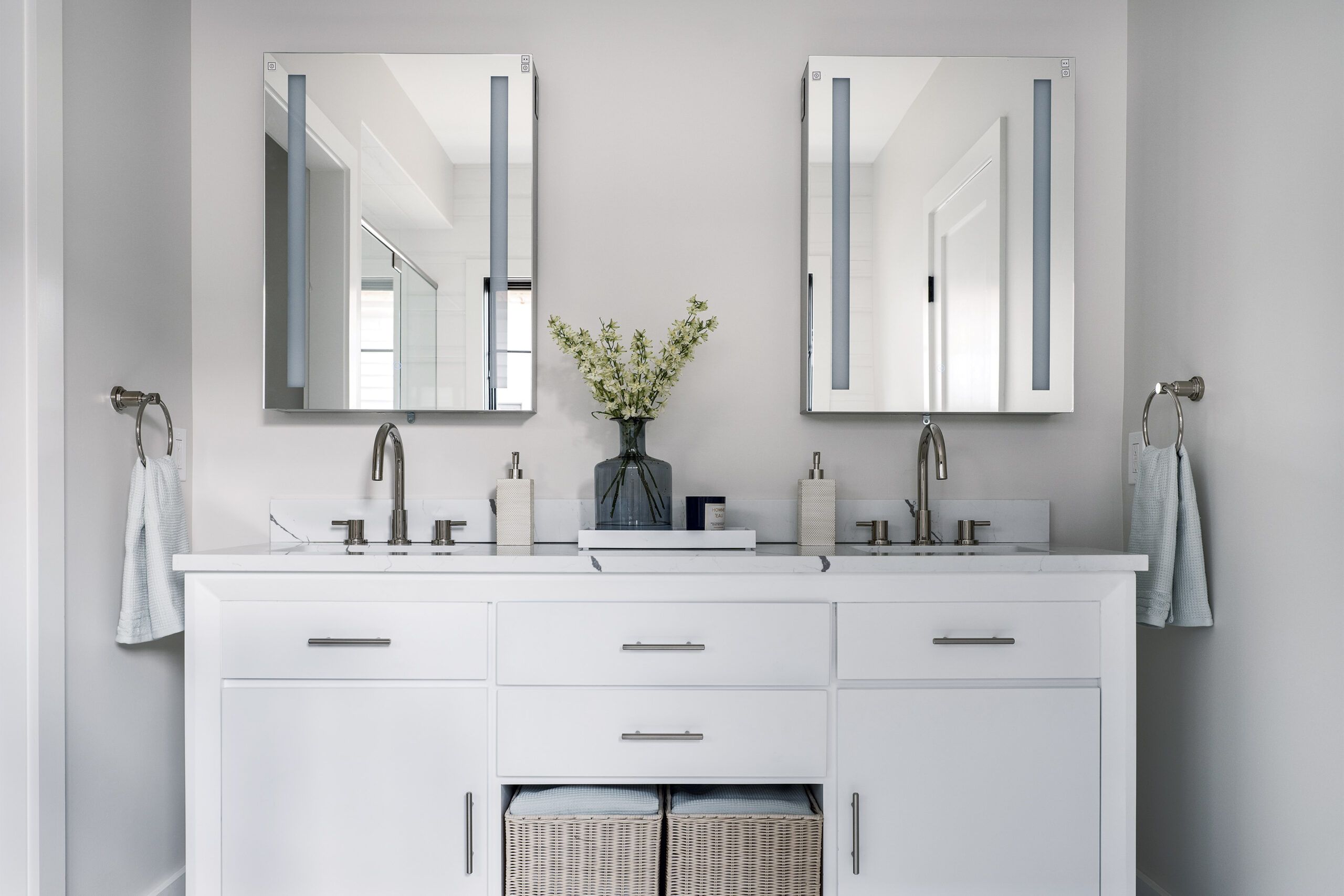Top Bathroom Paint Color Trends of 2013

The bathroom, often considered a sanctuary for relaxation and rejuvenation, saw a shift in color palettes in 2013, reflecting a growing preference for calming and sophisticated hues. This year saw a departure from the bold and vibrant colors of the previous decade, embracing a more understated and serene approach.
Popular Bathroom Paint Colors in 2013
The popularity of certain colors in 2013 reflected a shift in design preferences, leaning towards a sense of tranquility and sophistication.
- Gray: Gray emerged as a dominant color in 2013, offering a versatile backdrop for various bathroom styles. Its cool and understated nature created a sense of calm and sophistication, while its ability to complement a wide range of accent colors made it a popular choice for both modern and traditional bathrooms.
- Blue: Blue, particularly in its lighter shades, provided a sense of serenity and tranquility. It evoked a spa-like atmosphere, often paired with white fixtures and accents for a clean and refreshing feel. Blue was particularly popular in modern and contemporary bathrooms, where its clean lines and calming presence aligned well with the minimalist aesthetic.
- Green: Green, often associated with nature, brought a sense of freshness and vitality to the bathroom. It was frequently used in shades of sage or mint, offering a calming and relaxing ambiance. Green was a popular choice for traditional and eclectic bathrooms, where its natural tones could be incorporated with wood accents and floral patterns.
- Beige: Beige remained a popular choice for bathrooms, providing a neutral and timeless backdrop. It offered a sense of warmth and sophistication, creating a welcoming and inviting atmosphere. Beige was particularly popular in traditional and transitional bathrooms, where its classic appeal complemented traditional fixtures and decorative elements.
Alignment with Overall Design Trends
The popularity of these colors in 2013 aligned with the overall design trends of the time, which emphasized simplicity, functionality, and a sense of calm.
- Minimalism: The rise of minimalism in interior design led to a preference for clean lines, simple shapes, and a limited color palette. Gray, blue, and green, with their understated elegance, perfectly complemented this minimalist aesthetic, creating a sense of order and tranquility.
- Natural Elements: The growing appreciation for natural elements in interior design influenced the choice of colors. Green, with its association with nature, brought a sense of freshness and vitality to the bathroom. Beige, with its earthy tones, provided a warm and inviting atmosphere, reflecting the trend towards incorporating natural elements into the home.
- Spa-like Retreats: The desire to create a spa-like retreat within the home led to the popularity of calming and soothing colors. Blue, with its association with water and relaxation, evoked a sense of serenity and tranquility, while gray offered a neutral and sophisticated backdrop for a spa-like atmosphere.
Color Use in Different Bathroom Styles
These popular colors were incorporated into different bathroom styles, offering a range of aesthetic possibilities.
- Modern: Modern bathrooms often featured a minimalist aesthetic with clean lines and simple shapes. Gray, blue, and white were popular choices, creating a sense of order and tranquility. Gray walls, for example, provided a neutral backdrop for white fixtures and blue accents, creating a sleek and sophisticated look.
- Traditional: Traditional bathrooms often incorporated classic elements, such as ornate fixtures and decorative accents. Beige, green, and white were popular choices, creating a warm and inviting atmosphere. Beige walls, for instance, provided a timeless backdrop for white fixtures and green accents, offering a classic and elegant look.
- Eclectic: Eclectic bathrooms often featured a mix of styles and influences. Green, blue, and beige were popular choices, allowing for a playful and eclectic mix of colors and textures. Green walls, for example, could be paired with blue accents and beige fixtures, creating a unique and vibrant look.
Color Psychology and Bathroom Design

The bathroom is a sanctuary, a place to unwind and escape the stresses of daily life. Color plays a crucial role in creating the right atmosphere for relaxation and rejuvenation. By understanding the psychological effects of color, you can choose the perfect hues to transform your bathroom into a tranquil oasis.
Color Psychology in Bathroom Design
Color psychology explores the impact of different colors on human emotions, behavior, and perceptions. It’s a valuable tool for interior designers, architects, and even homeowners who want to create spaces that evoke specific feelings. In the context of bathroom design, color can influence how we feel, how we perceive the size and shape of the space, and even our overall well-being.
Practical Considerations for Bathroom Paint Colors: Best Bathroom Paint Colors 2013

Choosing the right bathroom paint color is a crucial step in creating a space that is both aesthetically pleasing and functional. It’s important to consider factors beyond just personal preference to ensure your bathroom feels inviting and comfortable.
Lighting and Color Perception
The amount and type of lighting in your bathroom can significantly affect how colors appear. Natural light can make colors appear brighter and more vibrant, while artificial light can create a warmer or cooler tone.
- In bathrooms with limited natural light, using light colors on the walls can help to create a sense of spaciousness and brightness. Light colors reflect light, making the room feel larger and more open.
- Conversely, in bathrooms with abundant natural light, you can use darker colors to create a more intimate and cozy atmosphere. Darker colors absorb light, making the room feel smaller and more enclosed.
Bathroom Size and Color Choice
The size of your bathroom can also influence your paint color choices.
- Small bathrooms can benefit from using light colors, as they create an illusion of more space. Light colors reflect light, making the room appear larger.
- Larger bathrooms can handle darker colors without feeling cramped. Darker colors can create a more dramatic and sophisticated look in a larger space.
Color Choices for Bathroom Functionality, Best bathroom paint colors 2013
Consider the functionality of your bathroom when choosing paint colors.
- For example, if you have a small bathroom that you want to make feel more spacious, you might choose a light color like white or a soft pastel.
- If you have a large bathroom that you want to make feel more intimate, you might choose a darker color like navy blue or gray.
Choosing Colors That Complement Existing Fixtures and Finishes
When selecting bathroom paint colors, consider the existing fixtures and finishes in your bathroom.
- If you have white fixtures, you can choose any color you like, but white, gray, or a light blue can create a clean and classic look.
- If you have chrome fixtures, you might want to choose a color that complements the silver tones, such as a light gray or a cool blue.
- If you have brass fixtures, you might want to choose a color that complements the warm tones, such as a warm beige or a soft yellow.
